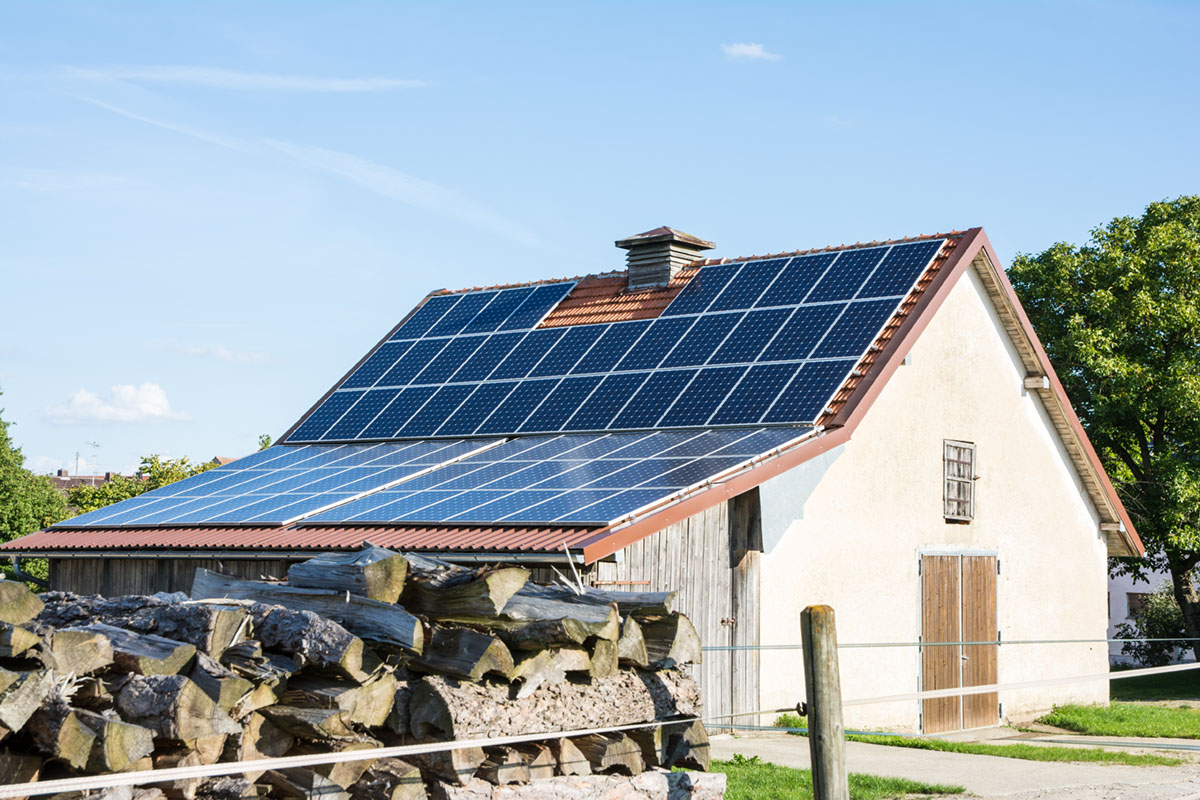In ranching and farming, the term ‘solar farm’ is tossed around a lot these days.
It’s popping up in conversations, on websites, and in industry-specific articles.
So, what’s the big deal?
Landowners are landing an additional income stream . . . thanks to solar farms.
You’ve seen the rows of solar panels sitting in fields around the region.
And a reliable second source of income probably sounds great.
But first, how do solar farms work?
Second, how they do supply energy, what the solar farms do for community members, and how they can work for you? (Okay, so this second point may be a bit hefty, but we’ll work it out).
How Do Solar Farms Work to Supply Energy?
Most people are familiar with rooftop solar, but not the large solar arrays on a solar farm.
Rooftop solar systems are generally located where the electricity is used.
On the other hand, solar farms are concentrated on large tracts of land.
This means the farm is physically removed from the end-user (pretty standard).
The US is home to more than 2,500 solar farms, many located on private lands, in the East Coast states, Florida, and California.
Yet, very few states don’t have at least one.
Most of these facilities produce 1 to 5 megawatts of solar power from south-facing panels absorbing solar energy during the day.
This energy is converted into electricity sent to the grid through the power lines and onto homes and businesses.
The concept of how solar farms work to supply energy is not much different from the traditional energy supply.
How Do Solar Farms Work for Residents and Businesses?
When residents and businesses set up their power with the local utility company, they automatically receive electricity.
This isn’t the case when customers get their electricity from a solar farm.
They must opt into a solar energy program either: 1) utility or 2) community.
Utility-Administered Programs
Utility companies operate most of the solar farms in the country.
They come in two flavors.
#1: With the first, the solar energy facility is part of a stable of renewable energy suppliers.
When customers opt in, they can receive their electricity from multiple sources.
They don’t determine where or how much of their energy comes from the different suppliers.
A third party owns and operates the solar farm.
#2: With the second type of program, the utility sponsors a community solar program.
How do solar farms work differently for these programs?
In this case, an individual solar facility is the sole source of renewable energy.
The utility or a third party may own and operate the facility, but the utility company is still the administrator.
Customers who sign up know exactly where their energy is coming from.
They either pay a monthly fee or an upfront amount to receive solar power from the farm.
Each month, participants receive credits on their bills based on solar farm production and the customer’s program contribution.
Community-Administered Programs
How do solar farms work in a community program?
These programs are often smaller than those for utility-scale facilities and come in two forms.
#1: The farms supply electricity to community members who sign up, and a community entity manages the program.
Multiple investors can buy into the operation — purchasing the equipment and leasing out the land — and then rent the panels to participating community members.
When community members participate in these programs, they receive a utility bill for the electricity they use during the month.
The rates are typically lower than standard electric rates.
#2: In the second model, community members purchase a share of the solar farm.
They then own the solar equipment for their portion of the facility until they decide to sell.
This type of community arrangement is more costly upfront for members.
But it provides greater energy independence.
It’s appealing for many residents and businesses, especially when their buildings can’t accommodate rooftop solar.
How Do Solar Farms Work for Farmers and Ranchers?
Farmers and ranchers can participate in solar farm programs, lowering your electric bills and reducing your carbon footprint.
Many landowners also host a solar farm on their property.
Those who want to diversify their incomes can convert a portion of their land into a solar farm.
In some instances, you can expand your operations to include solar farming and own the equipment.
But most farmers and ranchers lease their land to solar developers.
A lease arrangement allows you to earn a second income while still operating your primary business.
The solar developer sets the terms of these leases, indicating how much land they need and how much they pay per acre.
You may receive $250 to $2,000 per acre, depending on: 1) where you’re located; 2) the solar energy demand in your area; and 3) the characteristics of your property.
You can negotiate the terms and address specific conditions, such as whether the land could still be used for farming or ranching.
Where Can You Find More Information on How Do Solar Farms Work?
At Unbound Solar®, we’re dedicated to helping ranchers and farmers who want to diversify their income streams.
If you want more information on solar farms, we’d love to talk with you.
Get in touch today!



